Have you ever stopped to consider the silent language surrounding you? From the logo on your coffee mug to the website you’re currently browsing, visual communication shapes our world in powerful ways. This is the realm of graphic design, a field often shrouded in mystery but wielding immense influence on our perceptions and experiences.
Whether you’re drawn to the captivating allure of a well-crafted logo or simply curious about the forces behind the stunning visuals you encounter daily, this comprehensive guide is your portal to understanding graphic design. Here, we’ll demystify the core principles, unveil the diverse specializations, and equip you with the knowledge to navigate this exciting creative landscape.
This guide is designed for everyone, from curious onlookers to budding creatives. So, buckle up and prepare to unlock the magic of graphic design – a journey that promises to not only enhance your appreciation for visual artistry but also empower you to harness its potential in your own endeavours.
1. What is Graphic Design?
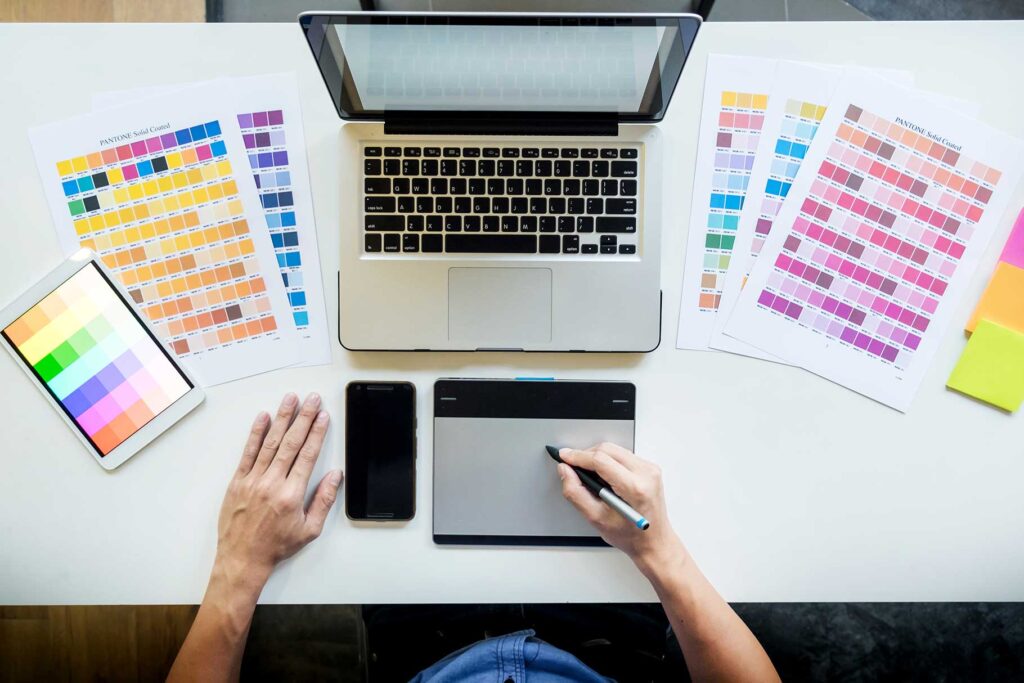
Graphic design isn’t simply about aesthetics; it’s a strategic language that utilizes visual elements to communicate ideas, shape perceptions, and influence behaviour. From the impactful brand logo that sparks instant recognition to the intuitive website layout that guides user interactions, graphic design permeates our daily lives.
Imagine navigating a website devoid of clear organization, or encountering a product with uninformative packaging. Effective graphic design bridges this gap, ensuring messages are conveyed efficiently and leave a lasting impression. It’s an essential tool for businesses, organizations, and individuals alike, fostering brand identity, enhancing user experience, and influencing decisions.
This guide serves as your initial foray into the captivating world of graphic design. We’ll delve into the fundamental elements that constitute compelling visuals, explore various specializations like branding and web design, and uncover the tools used by professionals to bring their creations to life. So, whether you’re a curious individual or an aspiring designer, get ready to unlock the power of visual communication and witness the magic of graphic design unfold.
2. Elements of Graphic Design
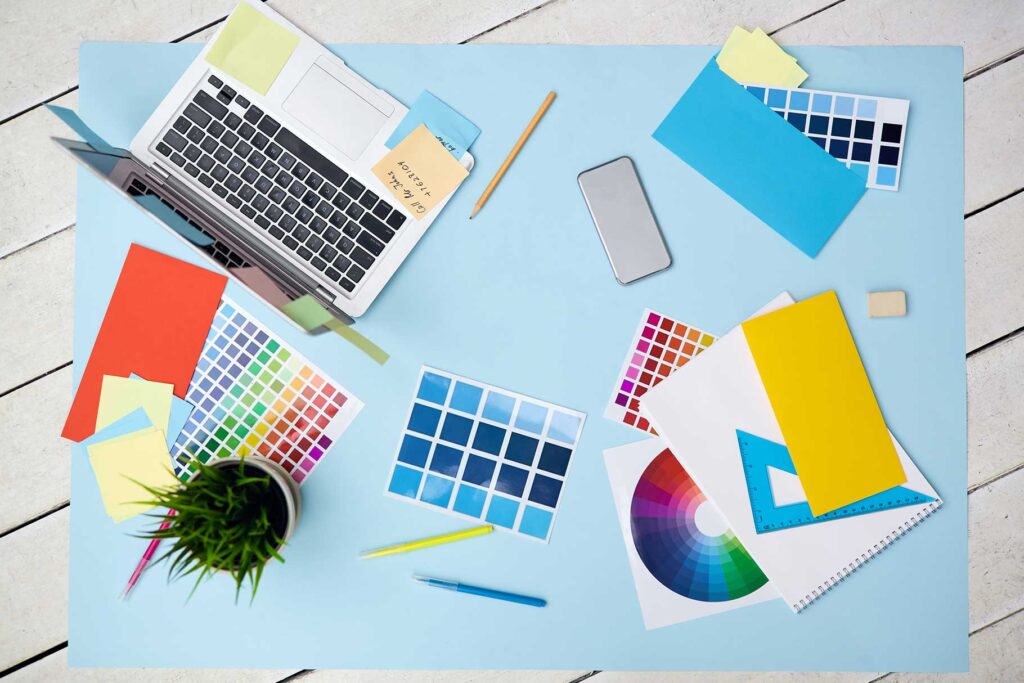
Imagine graphic design as a language, but instead of words, it speaks through lines, shapes, colours, and space. Each element acts like a brushstroke, carefully chosen to paint a compelling visual message.
Visual Hierarchy & Layout: This dictates where the eye travels first, guiding viewers through the composition. Imagine arranging furniture in a room; elements with importance take centre stage, while supporting pieces complement the arrangement.
Typography & Fonts: More than just text, fonts become characters with distinct personalities. A playful script evokes a fun brand, while a bold serif conveys authority. Choosing the right typeface adds depth and dimension to your message.
Colour Theory & Psychology: Colours don’t exist in isolation; they evoke emotions and influence behaviour. A fiery red demands attention, while calming blue fosters trust. Understanding colour theory allows designers to harness the power of emotions and guide viewer perception.
Images & Photography: A picture truly can be worth a thousand words. Choosing the right image can instantly tell a story, evoke an emotion, or connect with your audience on a deeper level.
Design Principles & Composition: Just like a musical composition needs harmony, visual elements need balance, contrast, and rhythm. These principles create pleasing arrangements that guide the eye and enhance the overall impact.
These elements might seem like independent players, but in the hands of a skilled designer, they become a symphony. By harmoniously combining them, graphic designers translate complex ideas into visually captivating experiences, leaving a lasting impression on the audience.
You may also like How to Make Money as a Graphic Designer
3. Types of Graphic Design
Graphic design, beyond its aesthetic appeal, thrives on versatility. It manifests in countless ways, shaping our daily experiences and driving communication across various industries. Delving into different specializations within this vast field reveals a vibrant landscape, each type serving a unique purpose. Let’s embark on a journey to explore some of the most prominent:
A. Logo Design
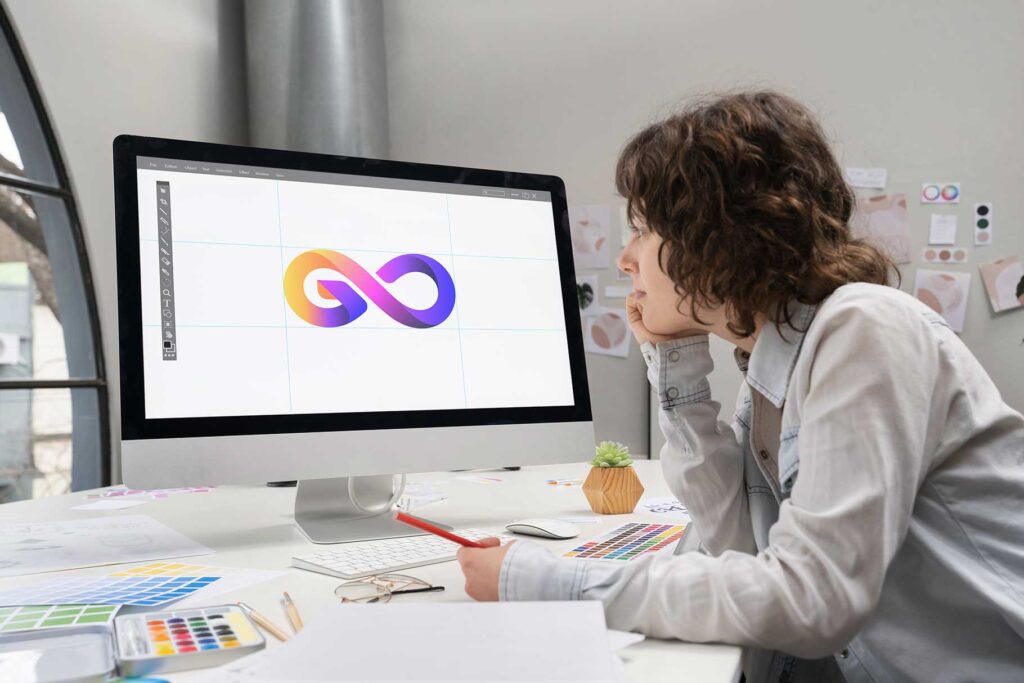
The silent ambassador of a brand, logo design encapsulates its identity in a single, memorable mark. From the iconic swoosh of Nike to the minimalist Apple logo, these visual symbols hold immense power in creating brand recognition and building trust. Skilled logo designers understand the importance of colour psychology, typography, and visual metaphors to craft impactful identities that resonate with the target audience.
B. Branding Design
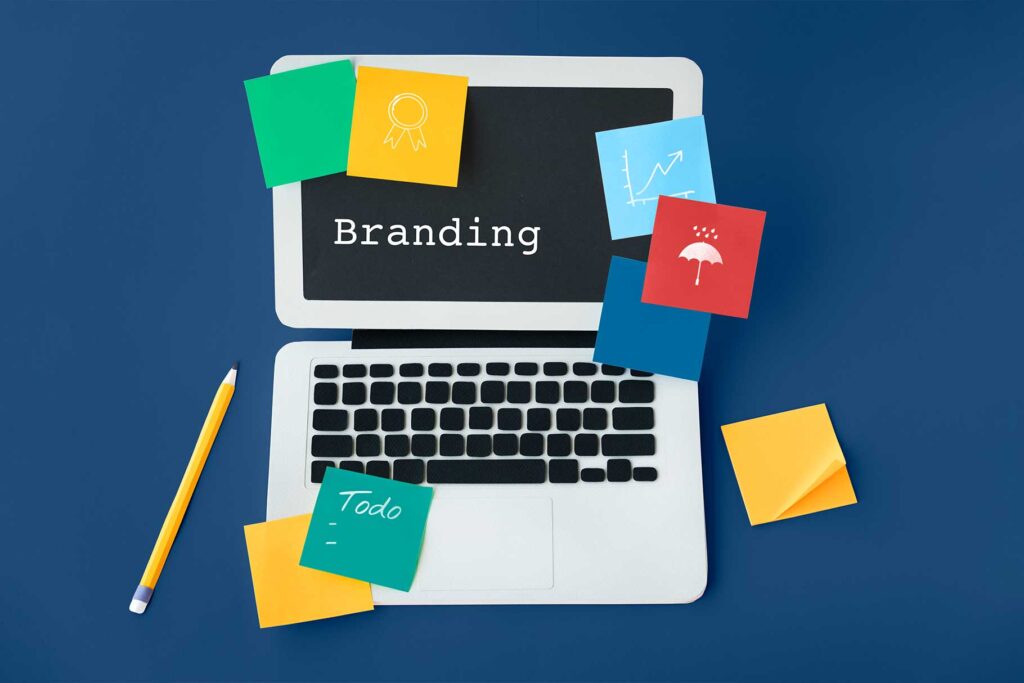
Going beyond the logo, branding design encompasses the entire visual language of a brand. It involves crafting a consistent look and feel across various touchpoints, from marketing materials and websites to packaging and social media presence. Consistency is key, ensuring every visual element reinforces the brand’s core values and messaging. This holistic approach fosters brand loyalty and recognition, building a strong foundation for success.
C. Marketing Design

At the heart of effective marketing campaigns lies compelling visual communication. Marketing designers create attention-grabbing graphics for advertisements, brochures, email marketing, and social media posts. Their expertise lies in understanding target audiences and using visuals to evoke emotions, convey information, and ultimately, drive conversions. Whether it’s through clever infographics or captivating product photography, their designs aim to capture attention, engage viewers, and ultimately push them towards a desired action.
D. Web Design
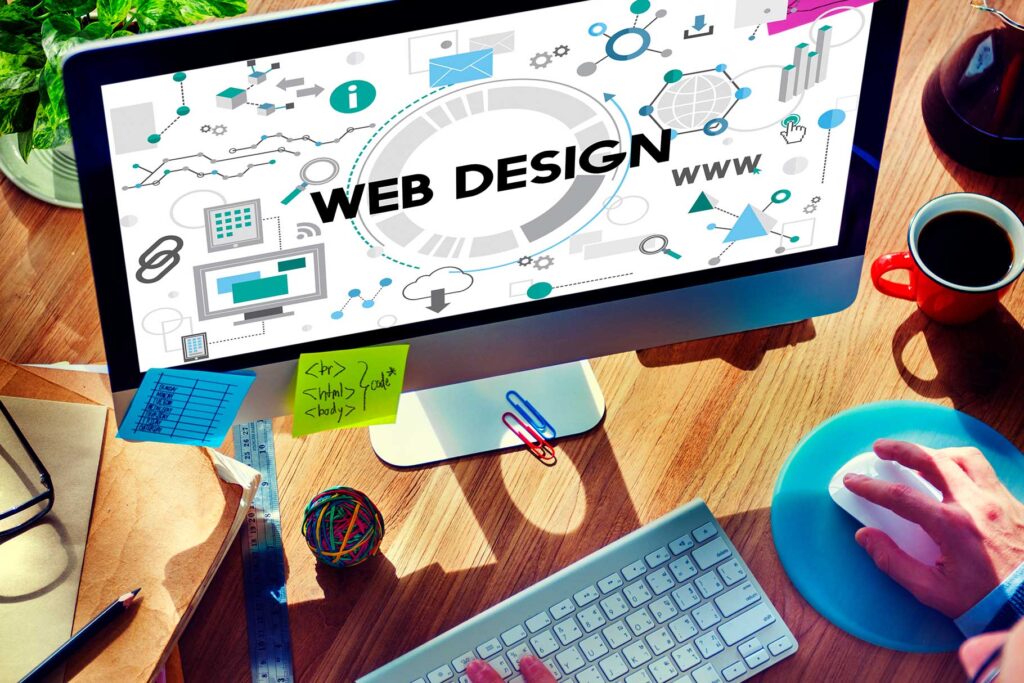
In today’s digital age, websites serve as the online face of businesses and individuals. Web designers specialize in crafting visually appealing and user-friendly websites that not only look good but also function seamlessly. They consider user experience (UX) principles to ensure intuitive navigation, information hierarchy, and responsiveness across different devices. Visually stimulating elements like typography, color palettes, and images further enhance the experience, engaging visitors and keeping them coming back for more.
Also, read Will AI Replace Graphic Designers? (The Harsh Truth)
E. Illustration Design

The power of storytelling doesn’t always rely on words. Illustration designers bring stories and ideas to life through visually captivating artwork. Their skills encompass various styles and techniques, from hand-drawn illustrations to digital creations. They collaborate with authors, publishers, and marketing teams to create illustrations for books, magazines, websites, and other media. Their visual narratives enhance engagement, add personality to a brand, and leave a lasting impression on viewers.
F. Packaging Design

The first impression often happens at the shelf. Packaging design plays a crucial role in attracting customers and influencing purchase decisions. Designers understand the importance of balancing aesthetics with functionality, utilizing colours, shapes, and typography to grab attention, communicate product information, and align with the brand identity. Sustainable packaging solutions are also gaining traction, allowing designers to contribute to environmental responsibility while making visually impactful choices.
G. Editorial Design

Whether it’s a captivating magazine layout or a visually rich report, editorial designers bring written content to life. They possess expertise in typography, grid layouts, and image placement to create visually engaging and informative publications. Their understanding of information hierarchy ensures readers can easily navigate and comprehend the content. Ultimately, good editorial design enhances the reading experience and strengthens the impact of the written word.
This glimpse into the diverse world of graphic design merely scratches the surface. Each of these specializations requires specific skills and knowledge, yet they all share a common thread: the power of visual communication. As technology and communication trends evolve, so too will the landscape of graphic design. But the core principles of conveying ideas, emotions, and information through visuals will remain, ensuring this field continues to shape our world in impactful ways.
4. What Tools Do Graphic Designers Use?
Beyond a blank canvas and raw inspiration, graphic designers rely on a diverse toolkit to bring their visions to life. While the specific tools may vary based on experience and specialization, the core arsenal empowers professionals to create impactful visuals.
Industry Standard Software: Leading the pack are the Adobe Creative Suite programs, offering industry-specific tools like Photoshop (image editing), Illustrator (vector graphics), and InDesign (page layout). These powerful applications cater to a wide range of design needs, from photo manipulation to intricate illustrations and professional layouts.
Free & Open-Source Alternatives: Recognizing that not everyone has access to expensive software, designers also utilize free and open-source options. GIMP, a free image editing software, offers features comparable to Photoshop, while Inkscape empowers vector design capabilities. These alternatives prove that powerful tools don’t have to break the bank.
Beyond Software: But design isn’t just about digital tools. Pen and paper remain essential for sketching ideas, brainstorming concepts, and developing initial mock-ups. Mood boards, physical collages of images and textures, help establish visual direction and convey design intent. Additionally, design research resources, fonts, and stock photo libraries play crucial roles in the creative process.
Choosing the Right Tool: The “best” tool is ultimately a personal choice, influenced by individual preferences, project requirements, and budget. The key lies in understanding the strengths and weaknesses of each option and selecting the ones that fit your workflow and design goals.
Remember, the most powerful tool in any designer’s arsenal is their creativity. The choice of software then becomes an extension of their vision, enabling them to translate ideas into impactful visuals that captivate, inform, and inspire.
Check out our trending article about The Art of Minimalism in Graphic Design (The Ultimate Guide)
5. How to Become a Graphic Designer?
The allure of shaping visual narratives and leaving your mark on the world beckons many to the exciting realm of graphic design. But how does one bridge the gap between creative spark and professional reality? Here’s a roadmap to guide your journey:
A. Laying the Foundation
- Formal Education: Earning a degree in graphic design provides a structured learning environment, industry-recognized skills, and valuable portfolio pieces. However, it’s not the only path.
- Self-directed Learning: Online courses, workshops, and tutorials offer flexibility and cater to diverse learning styles. Dive deep into specific software or design principles.
B. Honing Your Craft
- Practice Makes Progress: Don’t wait for “perfect” projects. Engage in personal design challenges, participate in online design contests, or volunteer your skills to non-profit organizations.
- Master the Toolbox: Explore industry-standard software like Adobe Creative Suite or free alternatives like Canva. Understand the strengths and purposes of each tool.
- Seeking Inspiration & Feedback: Immerse yourself in the design community. Follow established designers, analyze successful campaigns, and actively seek critiques to refine your work.
C. Building Your Portfolio
- Focus on Quality, Not Quantity: Showcase only your best work that demonstrates your diverse skills and problem-solving abilities.
- Tailor Your Portfolio: Target specific design niches or industries you’re drawn to. Adjust your portfolio content to resonate with potential employers.
- Present Yourself Professionally: Create a clean, user-friendly website or online platform to showcase your portfolio.
D. Launching Your Career
- Freelancing: Start building your own client base by offering freelance design services on platforms like Upwork or Fiverr. Gain valuable experience and build a diverse portfolio.
- Job Applications: Target design agencies, in-house design teams, or marketing departments of companies aligned with your interests.
- Networking & Community: Actively participate in design events, online forums, and professional communities. Build connections and showcase your expertise.
Remember: The journey to becoming a graphic designer is a continuous learning process. Stay informed about evolving trends, embrace new technologies, and never stop refining your skills. With dedication, passion, and a strategic approach, you can transform your design dreams into a fulfilling career.
Conclusion
The world of graphic design transcends mere aesthetics. It’s a potent language, weaving visuals that resonate without a single utterance. From building brand identities that captivate to crafting user interfaces that feel intuitive, its influence is undeniable. Now, armed with the fundamentals and tools outlined in this guide, you’re poised to embark on your own creative exploration.
Remember, graphic design is an ever-evolving journey. Embrace the challenge to experiment, seek inspiration from diverse sources, and refine your skills. As you cultivate your unique visual voice, you’ll unlock the potential to enthral audiences, tell impactful stories, and leave your mark on the world, one design masterpiece at a time.
Recommended reading: The 10 Best FREE Graphic Design Software in 2024
FAQs
Q. Do I need artistic talent to be a graphic designer?
A. While artistic talent can be an asset, it’s not essential for success in graphic design. The field values strong visual communication skills, critical thinking, and a passion for design principles more than raw artistic ability. Many successful graphic designers excel at problem-solving and understanding user needs, using their skills to create impactful visuals that resonate with the audience.
Q. What are some essential software tools for graphic designers?
A. The industry standard tools include Adobe Creative Suite (Photoshop, Illustrator, InDesign), but they can be costly for beginners. Free and open-source alternatives like GIMP, Inkscape, and Canva offer a great starting point. Regardless of the software, mastering design principles and honing your visual communication skills remain paramount.
Q. Can I become a graphic designer without a formal education?
A. Absolutely! While a design degree can provide valuable knowledge and structure, it’s not the only path to success. Many graphic designers are self-taught, relying on online resources, tutorials, and personal projects to develop their skills. Building a strong portfolio and actively seeking feedback are crucial for self-taught designers to showcase their capabilities and land opportunities.
Q. What are some of the most in-demand areas of graphic design?
A. The field constantly evolves, but some areas are currently experiencing high demand. User interface (UI) and user experience (UX) design, web design, and motion graphics are particularly sought-after due to the growing importance of digital experiences. However, don’t limit yourself – explore different areas and discover what aligns with your interests and strengths.
Q. What are the key qualities for a successful graphic designer?
A. Being a good graphic designer requires more than just technical skills. Creativity, problem-solving, communication, and adaptability are essential. A keen eye for detail, strong time management, and a willingness to learn and adapt to trends are also valuable assets. Finally, passion and a genuine desire to create impactful visuals will fuel your journey in this exciting field.
1 thought on “What is Graphic Design? (The Ultimate Guide)”